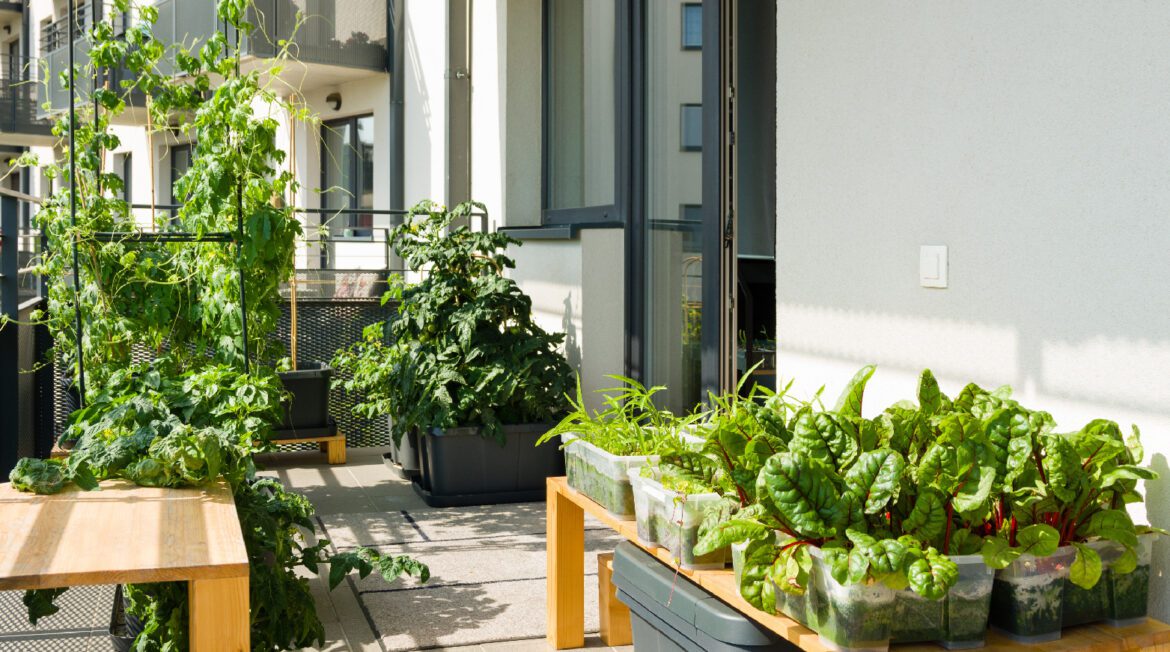Container gardening has gained popularity for its convenience and aesthetics. This method is excellent for accessibility, as the containers can be moved to a new location if the one you’ve chosen isn’t keeping your plant happy. Additionally, it lessens your chance of weeds and helps to utilize all available outdoor space.
Container gardening is also known for being particularly tricky for beginners who want to try a new form of gardening but are unsuspecting of the specific needs of their potted plants. Everyone knows most plants, whether vegetables or greenery, need sunlight, water, and quality soil. But container gardening can have variations and some extra steps than your regular ground gardening regimen.
Sunlight and Temperature
Plants in containers need full sunlight for about six hours a day. Depending on your climate, you should adjust accordingly. If your climate is hot and humid, shade your plants in the afternoon by placing them in a spot that still has sun while providing some afternoon shade so your plants keep their moisture. If you live in a cold climate, wait to put your plant containers outside until the temperature is reliably warm throughout the day.
You’ll want to acclimate your seedlings to outdoor conditions before placing them outside permanently. This is accomplished by placing your seedlings in a shady area for the first day, giving them full sun the second day but bringing them inside at night, and finally leaving them outside overnight. While a simple process, taking this extra step is essential to ensure your seeds aren’t shocked when left in the hot sun.
Watering and Draining
Keeping your plants happy and hydrated is the most critical aspect of your gardening journey and the most demanding part of growing any plant. Place your finger about an inch into the soil to ensure your plants retain as much moisture and hydration as they need. If you feel dampness, your plants are properly hydrated. If the soil is dry, add water. In the summer, you will need to water your plants once to twice a day, depending on your area’s weather. Watering in the morning is also an efficient way to ensure your plants keep their moisture throughout the hot hours of the day.
Watering is of the utmost importance when gardening, but a unique component of container gardening is ensuring your plants are draining correctly. Containers without a proper drainage system will result in standing water, leading to root rot and other bacteria growth that’s uninhabitable for your plants. The solution to this issue is a drainage hole or several smaller holes in the bottom of your container. Many plant containers will come with this feature, and if you decide to make a hole yourself, cover the bottom of the container with a coffee filter before adding your soil.
Picking Soil and Feeding Your Plants
Gardening blogs and publications widely agree that using soil from your garden is a deficient choice. Soil from a garden tends to compact in plant containers and prohibit the water from draining through. Garden expert Lindsey Hyland also advised the readers of Homes & Gardens that garden soil has a non ideal pH for container plants, leading to nutrient deficiencies. On top of that, garden soil can cause soil-borne illnesses and bacteria that will harm your plants.
While each plant has slightly different preferences in its soil, store-bought mixes marketed toward potted plants will be lightweight, dry, and contain rich nutrients, an excellent combination for your container garden.
Fertilizing your container plants is also important because of the limited ability of your plants to find fresh nutrients once the nutrients from the contained soil have been depleted. Fertilizing your plants several times during their growing season will aid in any nutrient scarcity within the soil, and it’s a great way to use your compost, as the fruits and vegetables we eat can also feed your plants.
Choosing a Container
There are countless options for gardening containers, and you can even make your own out of household items. While the container is entirely up to you, there are some key components your container should have. Using a larger container, nothing smaller than 12 inches across, is easier to maintain, and the more soil there is, the more moisture held. The container should also be a material that does well when wet. Ceramic and clay pots will evaporate water out of the soil very quickly, making it difficult for the plants to receive the moisture they need before it’s evaporated. To eliminate this issue, line your ceramic container with a plastic container or stone sealer.

